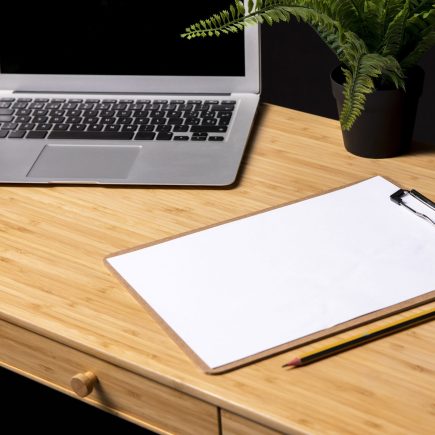Gardening on sloped land presents unique challenges, but with the right approach, it can also lead to a thriving, well-drained garden. A raised garden bed on a slope helps level the playing field for plants by providing optimal soil drainage and better access for cultivation. This guide will walk you through the step-by-step process of leveling a raised garden bed on sloped terrain, ensuring your garden is both functional and aesthetically pleasing.
Step 1: Understanding the Slope of Your Garden

Before you begin leveling, it’s crucial to understand the slope of your land. This helps you plan the depth adjustments needed to create a level garden bed.
How to Measure the Slope
To measure the slope, you’ll need some basic tools:
- Measuring Tape: For marking distances.
- Line Level: A small, easy-to-use tool that helps determine the grade of the slope.
- Beam Level: This is used for larger slopes to measure larger areas and ensure uniformity across the bed.
Measuring Process:
- Use the measuring tape to measure a fixed distance (e.g., 10 feet).
- Measure the difference in height between the start and end points.
- Divide the rise (height difference) by the horizontal run (distance measured) to determine the degree of slope.
Once you know the slope, it’s easier to figure out how much adjustment is needed.
Step 2: Preparing the Site

Site preparation is the foundation for a successful garden bed. This includes clearing the area of any debris, marking the layout, and preparing the soil for leveling.
Clearing the Area
Remove any large stones, branches, or other debris. This ensures a clean surface for leveling and building the bed.
Setting Up Stakes and Twine
Use stakes and twine to outline the area for your raised bed. This helps visualize the size and ensures the garden bed is aligned.
Marking the Layout
Mark the corners of the raised bed using chalk or spray paint. This makes it easier to follow your planned layout when constructing the bed.
Step 3: Calculating the Slope Adjustment

Now that the site is cleared and outlined, it’s time to adjust the height of the raised garden bed to level the slope.
How Much to Adjust
Use the line level to measure how much the slope changes over a given distance. The goal is to add or remove soil to make the garden bed flat.
Soil Adjustments
- Digging: If the high side of the slope is too elevated, dig down to level it with the lower side.
- Adding Soil: On the lower side, add soil to raise it to the desired height.
This process ensures that when you build your raised bed, it will remain level for a longer period.
Step 4: Creating a Stable Foundation
A stable foundation is essential for a long-lasting raised garden bed.
Using Gravel, Sand, or Stabilizing Materials
A base layer of gravel, sand, or crushed stone ensures stability and good drainage. Spread this material evenly across the ground where the bed will sit.
- Tip: If you’re using gravel, be sure to use a landscape fabric beneath it to prevent soil from mixing with the gravel.
Compacting the Base
Once the stabilizing material is in place, use a tamper or other heavy objects to compact the foundation. This prevents shifting and ensures the bed stays in place for years to come.
Step 5: Choosing the Right Materials
The material you use for your raised garden bed plays a crucial role in its durability, aesthetics, and functionality. Here’s a look at different materials and their benefits:
Material Options for Stability and Durability

- Wood: Pressure-treated wood is one of the most popular options. It’s easy to work with and offers a natural aesthetic. For example, the Outsunny 43.25″ x 18″ x 30″ Raised Garden Bed features durable fir wood with a lacquered finish, making it both sturdy and stylish.
- Metal: Galvanized steel is another excellent option for its resistance to rust and extreme weather. The Outsunny Galvanized Raised Garden Bed is a great choice for those looking for durability and minimal maintenance.
- Concrete Blocks or Stone: Ideal for those who want a more permanent structure. These materials add a rustic charm to your garden and are very stable, although more labor-intensive to set up.
Step 6: Building the Raised Bed
Now comes the construction phase! Whether you are using wood, stone, or metal, this step is essential to create a sturdy, level garden bed.
Step-by-Step Instructions for Construction

- Assemble the Frame: Depending on the material chosen, follow the assembly instructions for your specific garden bed. If using Outsunny’s Galvanized Raised Bed, for example, you’ll find easy-to-follow instructions and pre-cut panels.
- Align with Marked Layout: Make sure the bed is aligned with the stakes and twine markers you set up in Step 2.
- Secure the Frame: Use screws or nails for wood, or connectors for metal frames, to hold everything in place.
Ensuring Proper Alignment
Use your beam level throughout the process to ensure the bed remains level across all sides. This is crucial, as a sloped bed can lead to uneven water distribution.
Step 7: Drainage Considerations
Proper drainage is critical in sloped gardens to prevent water from pooling and causing plant root rot.
Managing Water Flow

Water runoff can be a significant issue on sloped land. Make sure the bed is constructed with drainage holes to allow water to escape freely. Outsunny Raised Garden Beds, like the Outsunny 7.9 x 2 x 1 ft Galvanized Raised Garden Bed, include smart designs that feature drainage holes, preventing excess water accumulation.
Use of Drainage Pipes or Gravel
Install drainage pipes or create a gravel layer in the bottom of your bed to facilitate water movement. This setup ensures that excess water is directed away from your plants, keeping the soil from becoming waterlogged.
Step 8: Adding Soil and Plants

Once the bed is built, it’s time to fill it with soil and get planting.
Choosing the Right Soil Mix
A good soil mix is essential for healthy plant growth. Consider a mix that combines:
- Compost for nutrients
- Perlite for drainage
- Peat moss for moisture retention
Best Plants for Sloped Garden Beds
Certain plants thrive better in raised beds on sloped land. Deep-rooted plants such as tomatoes, carrots, and lettuce work well because they benefit from well-drained, loose soil.
Step 9: Long-Term Maintenance

Maintaining your raised garden bed is key to keeping it level and functional over time.
Maintaining a Level Raised Bed
Over time, soil may settle or shift, causing unevenness in the bed. Regularly top up with fresh soil to keep the surface level.
Preventing Erosion
Use mulch or ground cover plants to help prevent erosion. This is especially useful on slopes where water can easily wash away topsoil.
Tip: To maintain a well-organized, healthy garden, regularly top up your Outsunny 4-Piece Raised Garden Bed with fresh soil to prevent uneven settling over time. Using mulch or ground cover plants around these beds will also help prevent erosion, especially on sloped areas where water runoff can wash away precious topsoil.
FAQs
How do I prevent the raised garden bed from shifting over time?
To prevent your raised garden bed from shifting, ensure you have a stable foundation by using gravel or sand as the base. Compact the materials well, and choose sturdy materials for the bed frame. Regularly check for any movement and reinforce the structure if needed.
How do I ensure proper drainage in my sloped raised garden bed?
To ensure proper drainage, incorporate drainage pipes or a layer of gravel at the bottom of your raised bed. This will allow water to escape freely and prevent the soil from becoming waterlogged. Additionally, make sure the bed has adequate drainage holes.
What should I do if one side of my raised garden bed is higher than the other?
If one side is higher, adjust the height by either adding soil to the lower side or digging down the higher side. Use a line level to check the accuracy and make sure the bed is level across all sides.
How can I make sure the plants in my raised bed grow well on a slope?
Choose plants that thrive in well-drained soil, such as deep-rooted vegetables like tomatoes or carrots. A balanced soil mix with compost, perlite, and peat moss will help retain moisture while promoting good drainage, which is essential for plant health on sloped land.






















